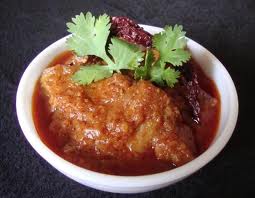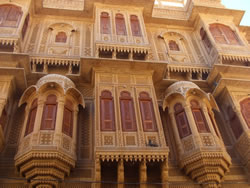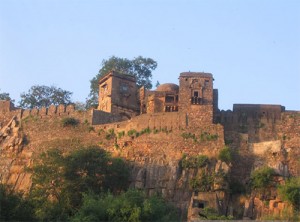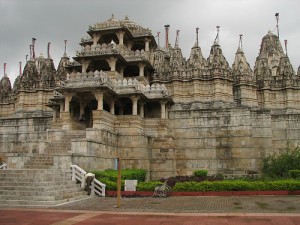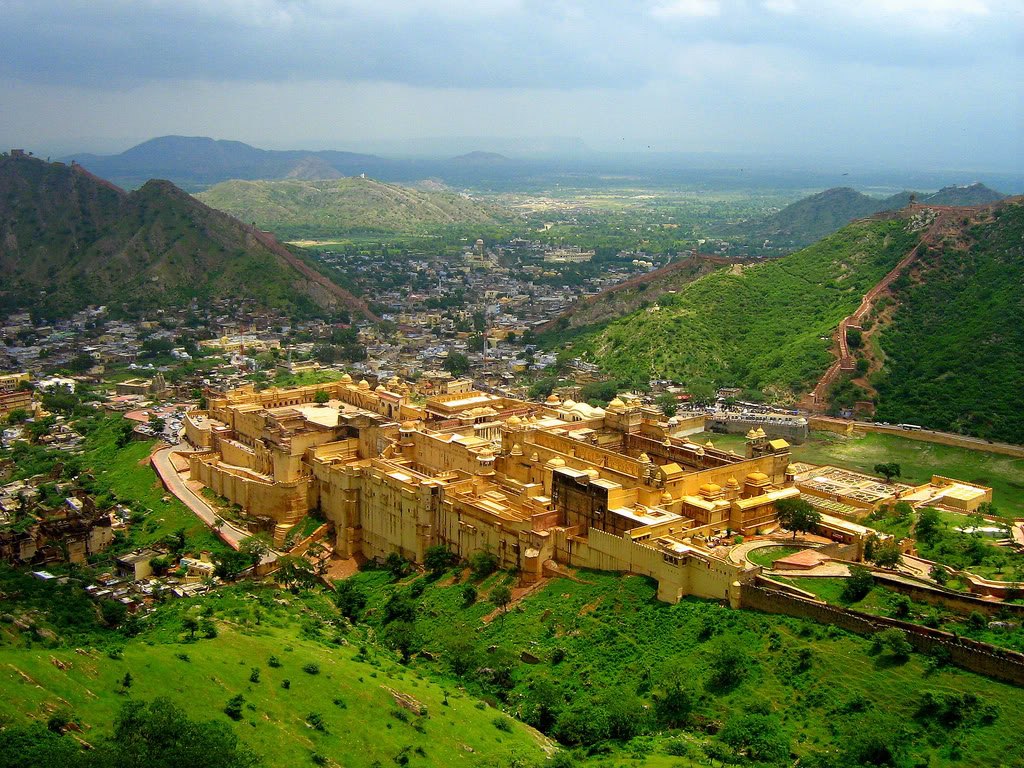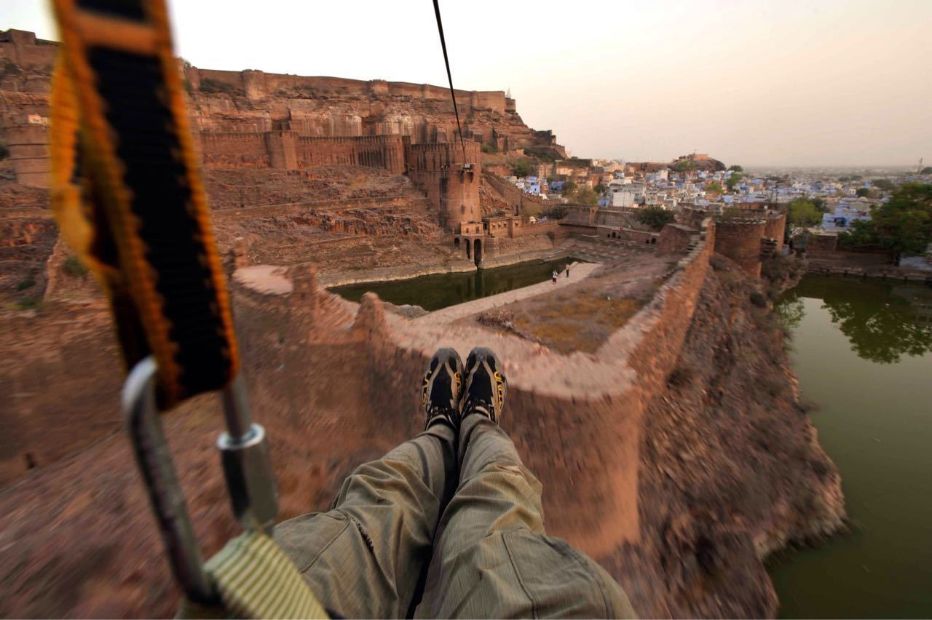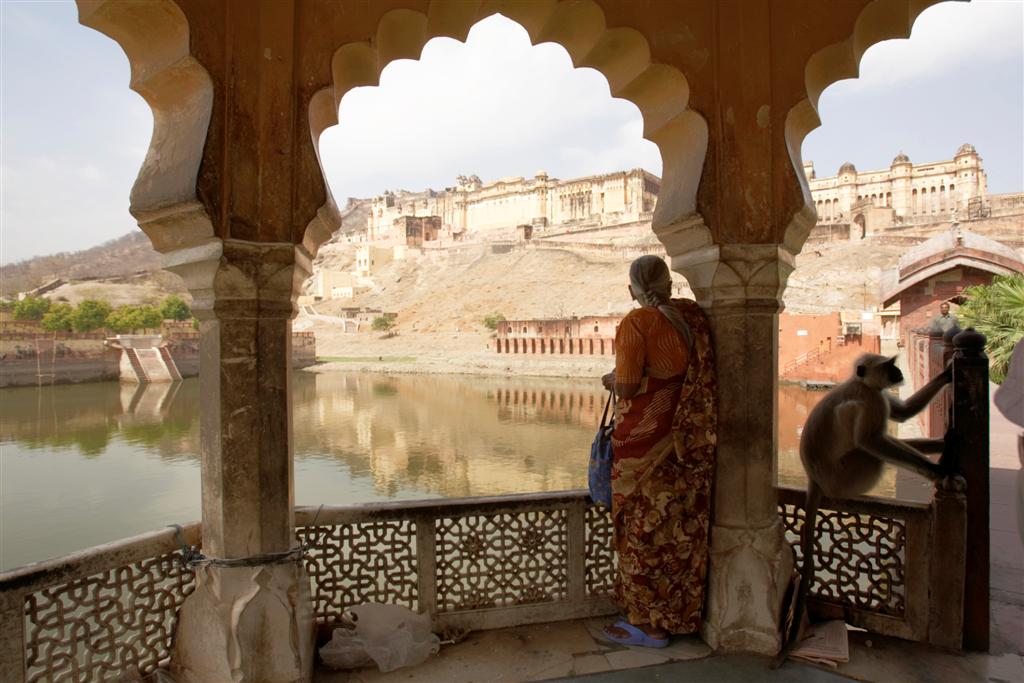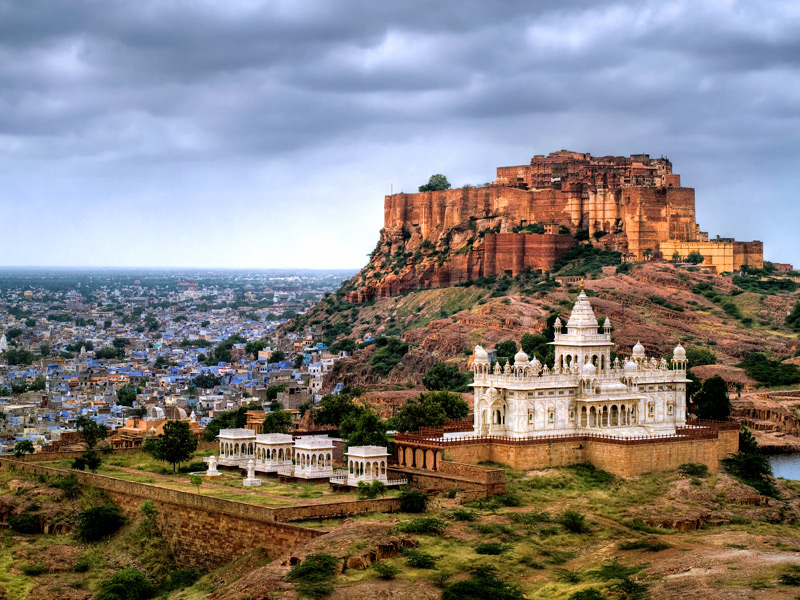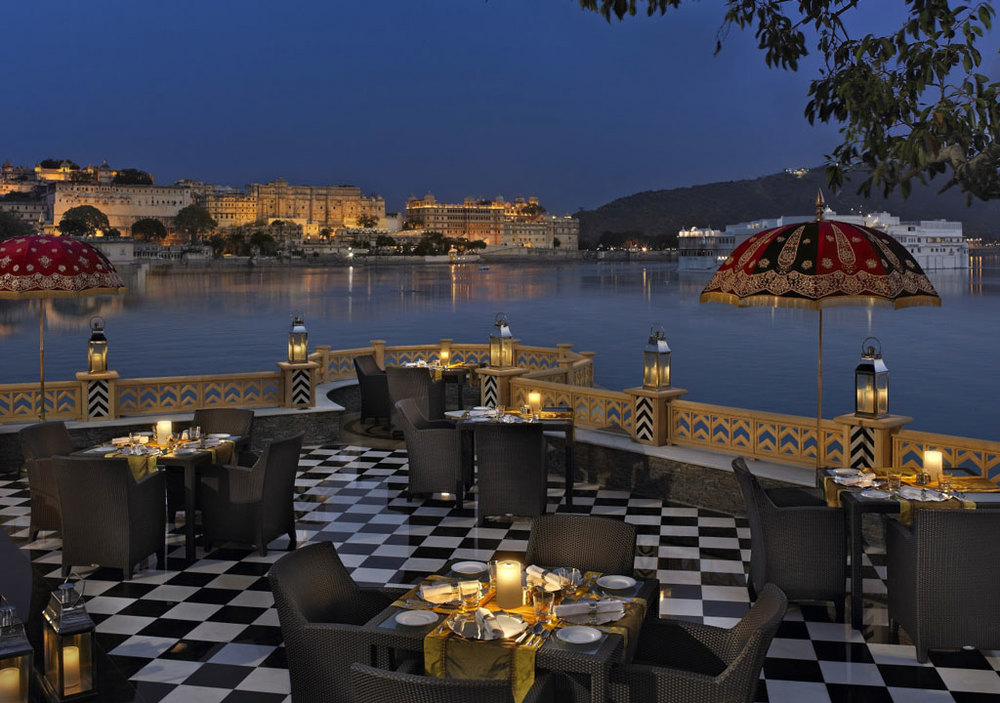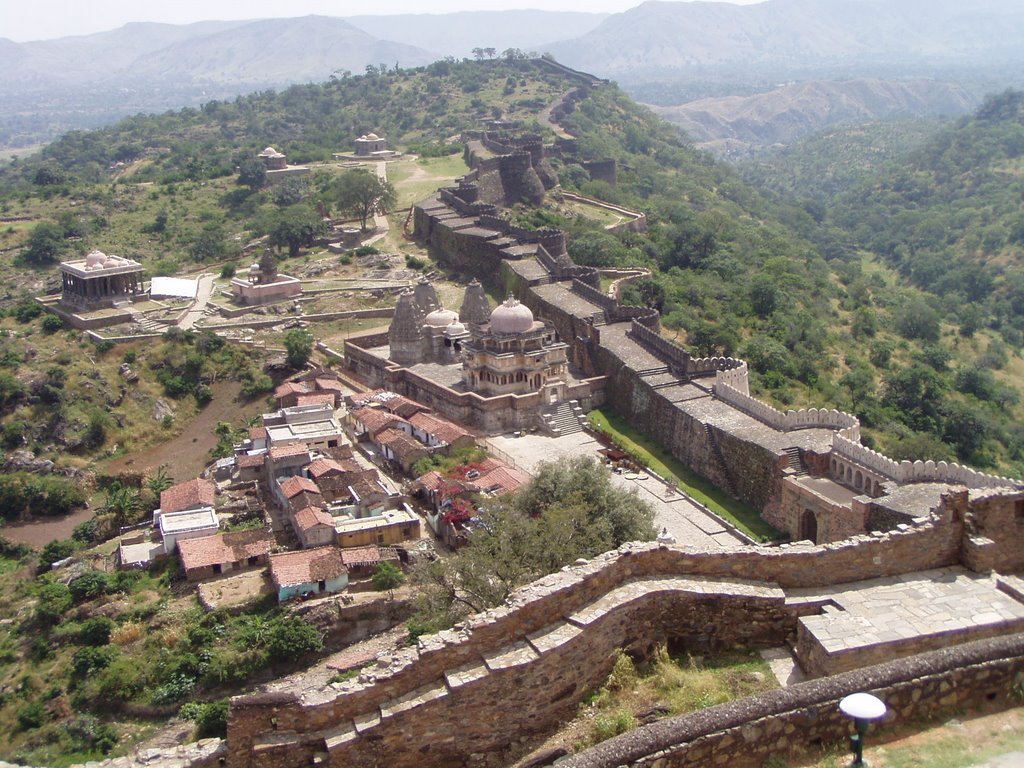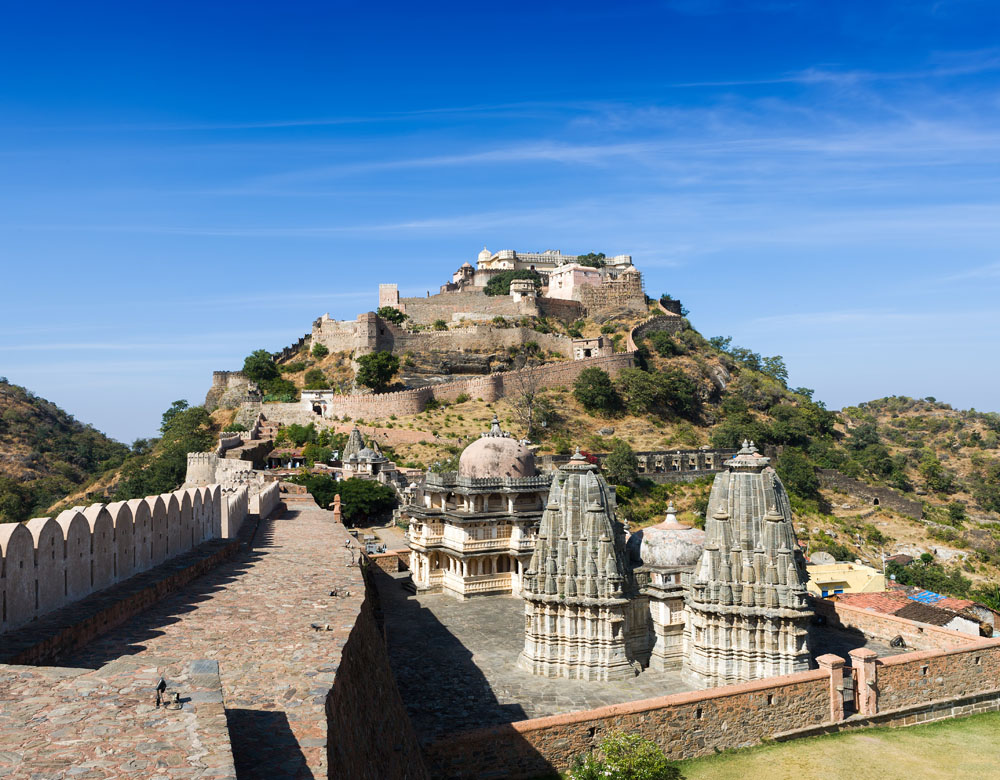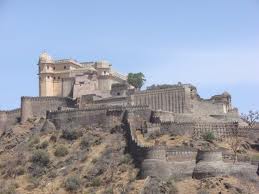
 Kumbhalgarh is an ancient Mewar fortress which stands majestically amidst a picturesque landscape in the district of Rajsamand in Southern Rajasthan. Situated just 82 km towards Northeast of Udaipur, the tourism capital of Southern Rajashtan, the fort was erected by Rana Kumbha (hence the name Kumbhalgarh) in 15th century AD. From the top of the fort one gets a panoramic view of the countryside. Though Kumbhalgarh is a small and serene place, there are some really inviting resorts in Kumbhalgarh for tourists who come from across the country and abroad.
Kumbhalgarh is an ancient Mewar fortress which stands majestically amidst a picturesque landscape in the district of Rajsamand in Southern Rajasthan. Situated just 82 km towards Northeast of Udaipur, the tourism capital of Southern Rajashtan, the fort was erected by Rana Kumbha (hence the name Kumbhalgarh) in 15th century AD. From the top of the fort one gets a panoramic view of the countryside. Though Kumbhalgarh is a small and serene place, there are some really inviting resorts in Kumbhalgarh for tourists who come from across the country and abroad.
Let us do a quick exploration the top five resorts in Kumbhalgarh:
 Aodhi Hotel: Aodhi is one of the most popular resorts in Kumbhalgarh. It has been constructed at one of the best locations to explore the fort. Set in a peaceful and idyllic setting, the hotel is modeled after the Kumbhalgarh resort itself! The structure of the resort is so designed that it matches the rugged landscape of the Kumbhalgarh area. A large swimming pool, green lawns and the spread of old trees lend a lot of charm to the hotel. Rooms are spacious and have pleasing interiors. Facilities are also top-notch. Another USP of staying at Aodhi Hotel is that you’ll be staying very close to the Kumbhalgarh Wildlife Sanctuary.
Aodhi Hotel: Aodhi is one of the most popular resorts in Kumbhalgarh. It has been constructed at one of the best locations to explore the fort. Set in a peaceful and idyllic setting, the hotel is modeled after the Kumbhalgarh resort itself! The structure of the resort is so designed that it matches the rugged landscape of the Kumbhalgarh area. A large swimming pool, green lawns and the spread of old trees lend a lot of charm to the hotel. Rooms are spacious and have pleasing interiors. Facilities are also top-notch. Another USP of staying at Aodhi Hotel is that you’ll be staying very close to the Kumbhalgarh Wildlife Sanctuary.
Tripadvisor.in ranks Aodhi Hotel as the numero uno hotel in Kumbhalgarh with most reviewers giving extremely favourable reviews to the hotel.
Dera Kumbhalgarh: Str ategically located, Dera Kumbhalgarh provides a breathtaking view of the landscape in the Kumbhalgarh area. It is a tent hotel which is located about 2 km from the fort on a hillock. The hotel stands surrounded by thick natural vegetation. Most people who stay in Dera are all praise for the tented accommodations. This is what some reviewers are saying about the hotel on tripadvisor.in: “This is a place one has to really experience.....the tented accommodation is far superior that the one seen in the pics. Location Great....Food Great...People Great.”
ategically located, Dera Kumbhalgarh provides a breathtaking view of the landscape in the Kumbhalgarh area. It is a tent hotel which is located about 2 km from the fort on a hillock. The hotel stands surrounded by thick natural vegetation. Most people who stay in Dera are all praise for the tented accommodations. This is what some reviewers are saying about the hotel on tripadvisor.in: “This is a place one has to really experience.....the tented accommodation is far superior that the one seen in the pics. Location Great....Food Great...People Great.”
Club Mahindra Fort Kumbh algarh : Although this resort doesn’t live up to the expectations one has from a brand name but it still makes for a pleasant staying experience. Upon reaching, the guests are received by folk artists performing on “dhols”. The property is neat and clean and well-maintained. Another inviting factor is an extremely well-behaved and forthcoming staff. Rooms are lovely and all of them have huge balconies. There are two mild deterrents: the food is average and the place is not very close to the major tourist attractions. Here’s what Tripadvisor has to say about Club Mahindra resort in Kumbhalgarh: “Overall I would give this a 3.5 on 5, for the nice rooms, welcoming staff, and ok food.”
algarh : Although this resort doesn’t live up to the expectations one has from a brand name but it still makes for a pleasant staying experience. Upon reaching, the guests are received by folk artists performing on “dhols”. The property is neat and clean and well-maintained. Another inviting factor is an extremely well-behaved and forthcoming staff. Rooms are lovely and all of them have huge balconies. There are two mild deterrents: the food is average and the place is not very close to the major tourist attractions. Here’s what Tripadvisor has to say about Club Mahindra resort in Kumbhalgarh: “Overall I would give this a 3.5 on 5, for the nice rooms, welcoming staff, and ok food.”
Karni Palace Hotel: Tucked away in a sublime setting, Karni Palace is another great place to stay while visiting Kumbhalgarh. The hotel provides for a number of recreational activities including horse/camel and jeep safari in the Kumbhalgarh sanctuary, trekking, mountaineering, camping and bird watching. It is relatively cheaper as compared to other hotels but still doesn’t compromise on the services. “Kumbhalgarg Fort is fantastic but the hotels are expensive. This is a reasonable budget choice that doesn't seem to have yet hit the guide books,” says Tripasvisor about the hotel.
Tiger Valley Resort: Tiger Valley Resort is another very popular resort among the tourists coming to Kumbhalgarh. It is located on the way leading to the Kumbhalgarh Fort, amidst the scenic beauty provided by the nature and the wildlife. Rooms are quite spacious and clean. The swimming pool is another star attraction. Its location gives it an advantage over other hotels in the area. The views from the hotel have been reported to be amazing.
Reaching Kumbhalgarh - Udaipur, situated 82 km away, is the nearest airport and it is connected by air to Delhi, Jaipur and Jodhpur. The nearest railhead is Phalna, a junction railway station which is well-connected to Ajmer, Ahmedabad, Chittorgarh, Jaipur, Delhi and Mumbai. Kumbhalgarh is also connected to Udaipur, Jodhpur, and Pushkar by Rajasthan State buses.



